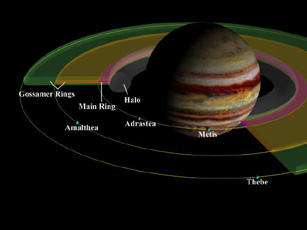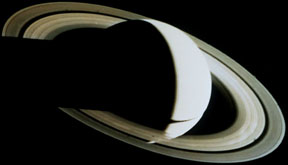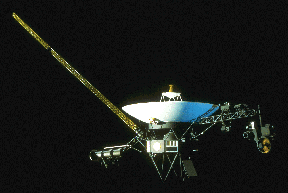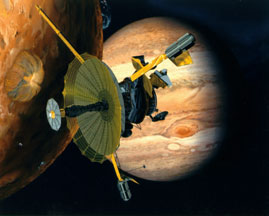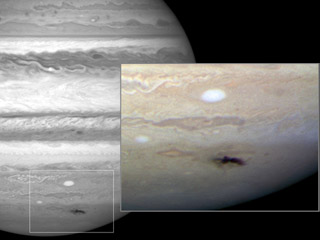Click on image for full size
Image courtesy of NASA/JPL.
Related links:
The Rings of Jupiter
Jupiter has a series of rings circling it! Unlike Saturn's rings, which are clearly visible from Earth even through small telescopes, Jupiter's rings are very difficult to see. So difficult, in fact, that they weren't discovered until a few years ago. Jupiter's rings were first found by the Voyager 1 spacecraft in 1979.
Three main sections comprise Jupiter's ring system. The innermost, cloud-like ring is called the Halo Ring. The next one out is the Main Ring, which is quite narrow and thin. Beyond the Main Ring is the wispy, nearly transparent Gossamer Ring. As shown in the diagram, the Gossamer Ring has two parts: the Amalthea Gossamer Ring (closer to Jupiter) and the Thebe Gossamer Ring.
Saturn's rings are mostly made of ice. Jupiter's rings are different - they are very dark and difficult to see. They are made up of small bits of dust. The Galileo spacecraft helped us discover where that dust comes from. Meteors striking the surface of Jupiter's small, inner moons kick up dust which then goes into orbit around Jupiter, forming the rings.
Facts about the rings:
- The Main Ring extends from about 122,500 km to 128,940 km from the center of Jupiter (Jupiter's radius is 71,398 km, so the Main Ring starts about 50,000 km above Jupiter's cloudtops). It is thus about 6,440 km (around 4,000 miles) wide. It is less than 30 km thick from top to bottom!
- The Halo Ring is closer to Jupiter. It extends from 92,000 km to about 122,500 km from Jupiter's center.
- The Gossamer Ring has two sections. The Amalthea Gossamer Ring extends inward from the orbit of the moon Amalthea at a distance of 181,000 km from Jupiter. It is enclosed within the Thebe Gossamer Ring, which extends inward from the orbit of the moon Thebe at a distance of 222,000 km from Jupiter.


